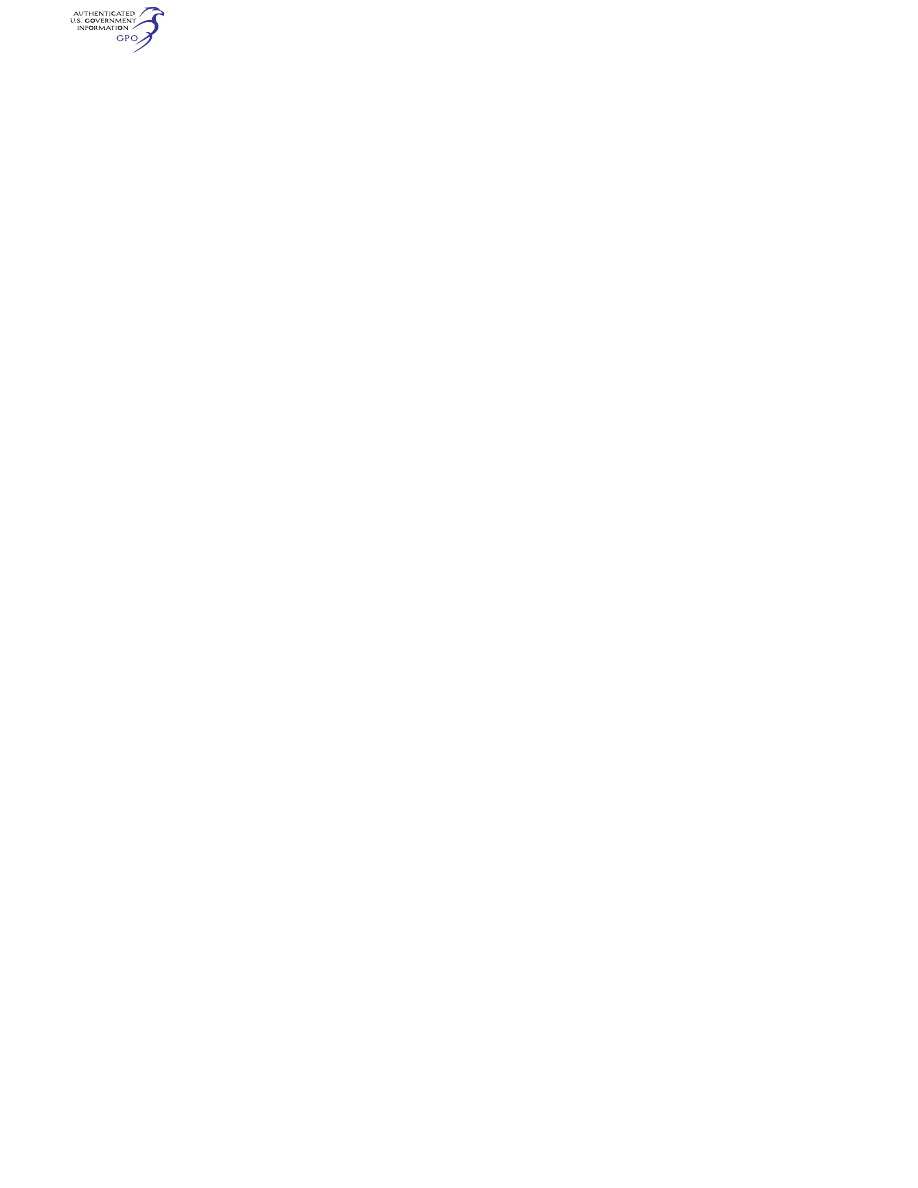
634
14 CFR Ch. I (1–1–24 Edition)
§ 29.953
designed, constructed, and installed, as
far as practicable, to be crash resist-
ant.
(g)
Rigid or semirigid fuel tanks. Rigid
or semirigid fuel tank or bladder walls
must be impact and tear resistant.
[Doc. No. 26352, 59 FR 50387, Oct. 3, 1994]
§ 29.953
Fuel system independence.
(a) For category A rotorcraft—
(1) The fuel system must meet the re-
quirements of § 29.903(b); and
(2) Unless other provisions are made
to meet paragraph (a)(1) of this section,
the fuel system must allow fuel to be
supplied to each engine through a sys-
tem independent of those parts of each
system supplying fuel to other engines.
(b) Each fuel system for a multien-
gine category B rotorcraft must meet
the requirements of paragraph (a)(2) of
this section. However, separate fuel
tanks need not be provided for each en-
gine.
§ 29.954
Fuel system lightning protec-
tion.
The fuel system must be designed
and arranged to prevent the ignition of
fuel vapor within the system by—
(a) Direct lightning strikes to areas
having a high probability of stroke at-
tachment;
(b) Swept lightning strokes to areas
where swept strokes are highly prob-
able; and
(c) Corona and streamering at fuel
vent outlets.
[Amdt. 29–26, 53 FR 34217, Sept. 2, 1988]
§ 29.955
Fuel flow.
(a)
General. The fuel system for each
engine must provide the engine with at
least 100 percent of the fuel required
under all operating and maneuvering
conditions to be approved for the rotor-
craft, including, as applicable, the fuel
required to operate the engines under
the test conditions required by § 29.927.
Unless equivalent methods are used,
compliance must be shown by test dur-
ing which the following provisions are
met, except that combinations of con-
ditions which are shown to be improb-
able need not be considered.
(1) The fuel pressure, corrected for
accelerations (load factors), must be
within the limits specified by the en-
gine type certificate data sheet.
(2) The fuel level in the tank may not
exceed that established as the unusable
fuel supply for that tank under § 29.959,
plus that necessary to conduct the
test.
(3) The fuel head between the tank
and the engine must be critical with
respect to rotorcraft flight attitudes.
(4) The fuel flow transmitter, if in-
stalled, and the critical fuel pump (for
pump-fed systems) must be installed to
produce (by actual or simulated fail-
ure) the critical restriction to fuel flow
to be expected from component failure.
(5) Critical values of engine rota-
tional speed, electrical power, or other
sources of fuel pump motive power
must be applied.
(6) Critical values of fuel properties
which adversely affect fuel flow are ap-
plied during demonstrations of fuel
flow capability.
(7) The fuel filter required by § 29.997
is blocked to the degree necessary to
simulate the accumulation of fuel con-
tamination required to activate the in-
dicator required by § 29.1305(a)(18).
(b)
Fuel transfer system. If normal op-
eration of the fuel system requires fuel
to be transferred to another tank, the
transfer must occur automatically via
a system which has been shown to
maintain the fuel level in the receiving
tank within acceptable limits during
flight or surface operation of the rotor-
craft.
(c)
Multiple fuel tanks. If an engine
can be supplied with fuel from more
than one tank, the fuel system, in addi-
tion to having appropriate manual
switching capability, must be designed
to prevent interruption of fuel flow to
that engine, without attention by the
flightcrew, when any tank supplying
fuel to that engine is depleted of usable
fuel during normal operation and any
other tank that normally supplies fuel
to that engine alone contains usable
fuel.
[Amdt. 29–26, 53 FR 34217, Sept. 2, 1988, as
amended by Amdt. 29–59, 88 FR 8739, Feb. 10,
2023]
VerDate Sep<11>2014
09:06 Jun 28, 2024
Jkt 262046
PO 00000
Frm 00644
Fmt 8010
Sfmt 8010
Y:\SGML\262046.XXX
262046
jspears on DSK121TN23PROD with CFR